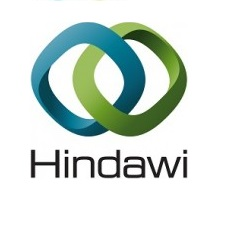| مشخصات مقاله | |
| انتشار | مقاله سال ۲۰۱۸ |
| تعداد صفحات مقاله انگلیسی | ۷ صفحه |
| هزینه | دانلود مقاله انگلیسی رایگان میباشد. |
| منتشر شده در | نشریه هینداوی |
| نوع مقاله | ISI |
| عنوان انگلیسی مقاله | A Comparison of Two Nights of Ambulatory Sleep Testing in Arrhythmia Patients |
| ترجمه عنوان مقاله | مقایسه آزمایش دو شب خواب گردشی در بیماران آریتمی قلبی |
| فرمت مقاله انگلیسی | |
| رشته های مرتبط | پزشکی |
| گرایش های مرتبط | قلب و عروق |
| مجله | اختلالات خواب – Sleep Disorders |
| دانشگاه | Institute of Medical Science – University of Toronto – Canada |
| شناسه دیجیتال – doi |
https://doi.org/10.1155/2018/2394146 |
| کد محصول | E8237 |
| وضعیت ترجمه مقاله | ترجمه آماده این مقاله موجود نمیباشد. میتوانید از طریق دکمه پایین سفارش دهید. |
| دانلود رایگان مقاله | دانلود رایگان مقاله انگلیسی |
| سفارش ترجمه این مقاله | سفارش ترجمه این مقاله |
| بخشی از متن مقاله: |
| ۱٫ Introduction
Obstructive sleep apnea (OSA) is a common disorder associated with signifcant cardiovascular morbidities [1, 2]. OSA has been identifed as a risk factor for the induction and progression of signifcant cardiac rhythm disturbance including atrial fbrillation [3].Te diagnosis and treatment of OSA may decrease the recurrence and/or severity of cardiac arrhythmia [3]. Te gold-standard method for the diagnosis of OSA is an overnight in-laboratory polysomnography (PSG) [4]. Te severity of OSA is classifed according to the apneahypopnea-index (AHI), which is the number of obstructive events per hour of sleep. OSA is considered mild with an AHI between 5 and 15/hour; moderate with an AHI of 15 and 30/hour; and severe with an AHI ≥ ۳۰/hour [5]. Other measures of the disease activity include the degree of hypoxemia and the arousal index. For some, the presence of the clinical sequelae of apnea is considered when evaluating the clinical severity of OSA. Tese may include excessive daytime sleepiness, hypertension, and depression. Te overnight in-laboratory PSG involves the concurrent recording of physiologic signals during sleep, including the electroencephalogram (EEG), electrooculogram (EOG), electromyogram (EMG), and electrocardiogram (ECG). For identifcation of obstructive events, an oronasal airfow sensor is used to monitor the airfow. For monitoring of respiratory efort, dual thoracoabdominal belts are used. Typically, oxygen saturation is measured using a pulse oximeter attached to the patient’s fnger. In addition, a nasal pressure transducer is used for snoring detection. Te in-laboratory PSG has several challenges including signifcant fnancial, human, and healthcare costs [6]. Polysomnographic studies are typically conducted in a sleep laboratory which is an unfamiliar environment for patients and is associated with the discomfort of being connected to a recording device with several wires. Tese environmental changes create a phenomenon known as the “frst night efect” [۷], which implicates changes in sleep quality and efciency resulting in inaccurate and unrepresentative results. Moreover, there are diferences in the recording techniques among diferent sleep laboratories, and until recently a lack of awareness of the implication of rapid eye movement (REM) and nonrapid eye movement (NREM) related apneas [8]. In addition, the inconsistency of the results related to diferent criteria, such as the threshold of oxygen desaturation, exists between diferent laboratories. Some variability in sleep data may result due to night-to-night variability or the “frst night efect” [۷]. Further, in-laboratory PSG requires monitoring by an attending sleep technician. Another challenge is the scarcity and distribution of sleep laboratories compared to the high number of patients who may need a sleep assessment such as arrhythmia patients. Finally, a sleep study may need to be repeated if inadequate sleep was recorded as in such case inadequate data may not be reliable for obtaining a diagnosis. Te previous reasons suggest that in-laboratory PSG increases the healthcare burden and could be a contributing factor to the underrecognition of OSA. |
